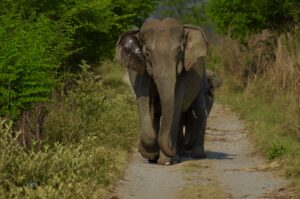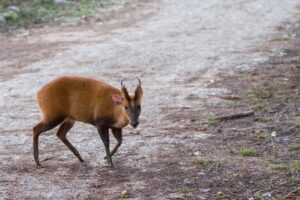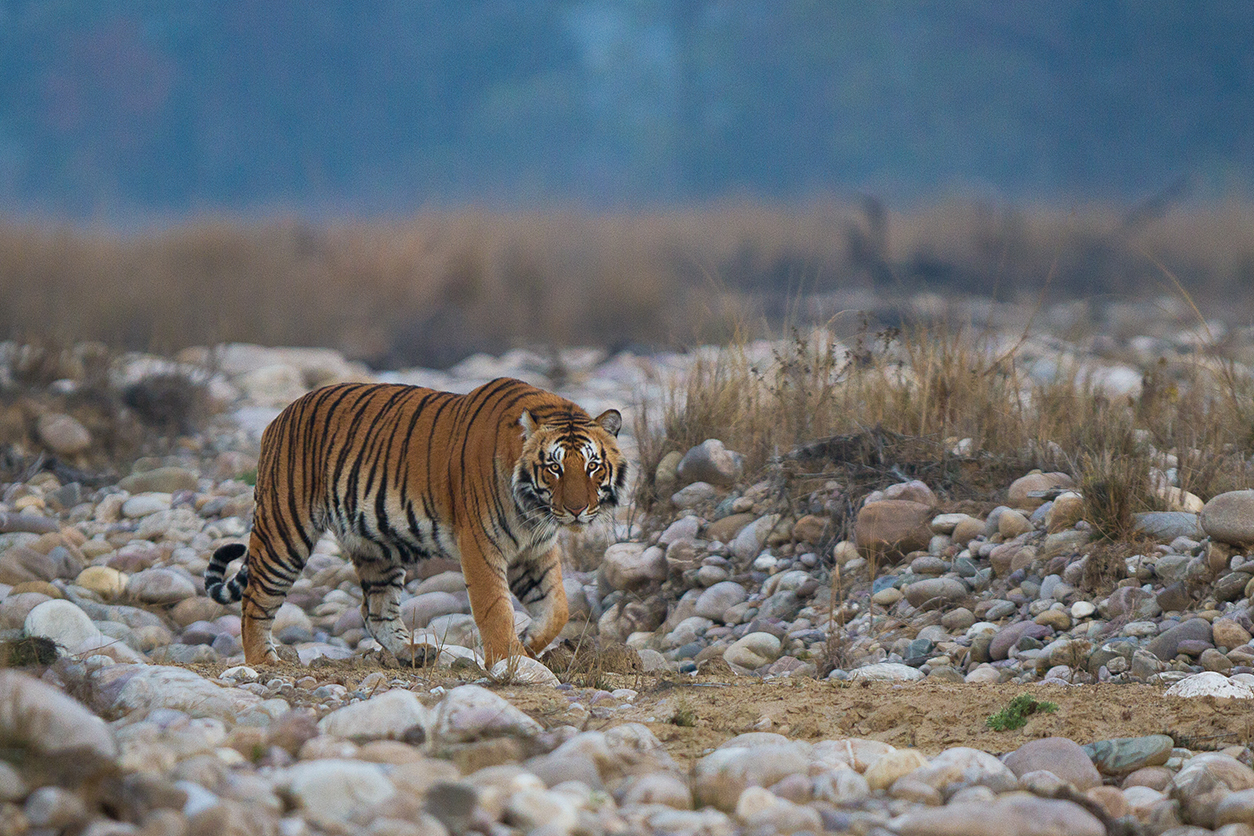Jim Corbett National Park is an important tourist destination in India. Jim Corbett national park is situated in the Nainital district of Uttarakhand state.
This National Sanctuary has been created by enclosing a vast area near Ramnagar town in the Nainital district of Uttarakhand state. It was established in 1936 to protect the endangered Bengal Tigers.
It is spread over an area of about 1316 square kilometers on the banks of the Ramganga river between Garhwal and Kumaon.
Jim Corbett National Park
Jim Corbett National Park is the oldest national park in India and was established in 1936 as Hailey National Park to protect the endangered Bengal tiger. It was named after Jim Corbett who was instrumental in its establishment.
The main office of this park is in Ramnagar and tourists enter this park with a permit from here. When tourists enter the park from the eastern gate, small rivers, streams, shady trees of shawls and an unknown fragrance of flowers and plants fascinate them.

This park is an integral part of Uttaranchal. Various types of beautiful flowers and wildlife are found in this park. Elephants, cheetahs, lions, etc. live in the protected natural places here. 110 types of trees, 50 species of mammals, 580 species of birds, and 25 types of reptiles are found in the park.
Leopards are seen in the lap of the natural mountains of the park. Various types of nocturnal cats are found here. Apart from this, many wild cats are also found. Sloth bears are found in the lower part of the park and Himalayan black bears live at the heights of the hills.
On the banks of the Ram Ganga river, you can find alligators, and crocodiles eating snout fish. You can also find Ghorals on the banks of rocky hills.
This was the first park to come under the Tiger Project initiative. It is a proud zoological sanctuary.
Corbett has been a haven for tourists and wildlife lovers for a long time. Tourist activities will be allowed only in selected areas of the Corbett Tiger Reserve so that people will get a chance to see its magnificent landscape and various wildlife.
Corbett National Park covers 520.8 km (201.1 sq mi) of hills, river belts, swampy depressions, grasslands, and a large lake. The altitude ranges from 1,300 to 4,000 feet (400 to 1,220 m). Here in winter, the nights are cold but the days are sunny and hot.
It rains from July to September. The dense moist deciduous forest consists mainly of Sal, Haldu, Peepal, Rohini, and Mango trees.
Jim Corbett National Park History
Jim Corbett National Park has a rich history. This park was once the private property of the rulers of Tehri Garhwal. It is said that in 1820 the British discovered this rugged forest. At that time there was a kingdom of dreaded wild animals.
The British rule initially planted shawl trees here and named this park ‘The Hailey National Park’. However, the British exploited the park for timber and cut down teak trees in large numbers for train seats. For the first time, Major Ramsey prepared a comprehensive plan for its conservation.
In 1879, the Forest Department took over it and declared it a protected area. In 1934, the Governor of the United Provinces, Malcolm Haley, declared this protected forest a biological park. The park was named ‘Haley National Park’ in 1936 after Governor Malcolm Hailey.
After independence, this park was named ‘Ramganga National Park’. In 1957, it was named ‘Jim Corbett National Park’.
Jim Corbett was a clever English hunter. He was born in a place called Kaladhungi of Nainital. He made the people of the area free from fear by hunting man-eating tigers there. The local people called him “Gora Sadhu”.
His residence in Kaladhungi has now been converted into a magnificent museum. It contains pictures of Jim Corbett, his books, his photographs with lions, weapons of that time, many types of guns, and many types of reading material related to wildlife.
It is very nice to sit in the courtyard of this museum built in a calm atmosphere and under the shade of dense trees.
The Government of India has protected its habitat in a network of national parks and sanctuaries across the country under the Wildlife (Protection) Act of 1935.
When tiger projects were initiated in 1973, 23 reserve forest areas were created in 14 states. Later two more areas were brought under it, due to which their number has now increased to 25.
Under this, sanctuaries like Kaziranga, Dudhwa, Ranthambore, Sariska, Bandipur, Kanha, Sundarban, etc. were established. Jim Corbett Park came under this scheme in 1993.
Travel In Jim Corbett National Park
However, Jim Corbett National Sanctuary can be visited only by riding on an elephant, as the noise of motor vehicles disturbs the wildlife. Elephants are available to tourists from the lounge itself.
Tourists sitting on elephants pass through the high-pitched forest trails, tall grass, and shawl trees. Here, not only lions and tigers, herds of elephants, groups of deer filling the kulchas, small rivers and streams, the song of the springs, the noise of the strong current of the Ramganga river, the dense shade of the shawl trees and the silence of the dense forest everything in itself. is unique.

Jim Corbett Park Animals
This national park is home to several endangered animals and critically endangered species, especially the Asian elephant and alligator.
The main attraction is the majestic Royal Bengal Tiger. Apart from this, other species found here like Asian Black Bear, Walking Deer, Hog Deer, Sambar, and Sloth are also very special.
Jim Corbett National Park is a paradise for bird lovers as it is home to 600 species of birds, including the Great Pied Hornbill, and the White-backed Vulture. Includes peacock, Hodgson bushchat, orange-breasted green pigeon, sea fish eagle, golden oriole, fish owl, etc.
The endangered reptiles, mugger crocodiles, and king cobra are also found in Jim Corbett National Park.
How to Reach Jim Corbett, National Park
There are two railway stations to reach here- Ramnagar and Haldwani. From Ramnagar to ‘Dhikala’ 47 km. is a paved road. The park is just 240 km away from Delhi.
Jim Corbett National Park TimeTable
You can visit this park throughout the year but the best time to visit it is between November and February.
winter
• Morning Safari: 07:30 am – 10:30 pm
• Evening Safari: 15:00 PM – 17:00 PM
Heat
• Morning Safari: 06:30 am – 09:30 pm
• Evening Safari: 16:00 – 18:00

My self Dev Satish. I’m an Author and Founder of tourism-rajasthan.com. I’m from Rajasthan and If I talk about my Education then I’m Law Graduate. I love doing work that makes me happy, that’s why I love traveling. you will find Rajasthan travel ideas & tips on this blog.
